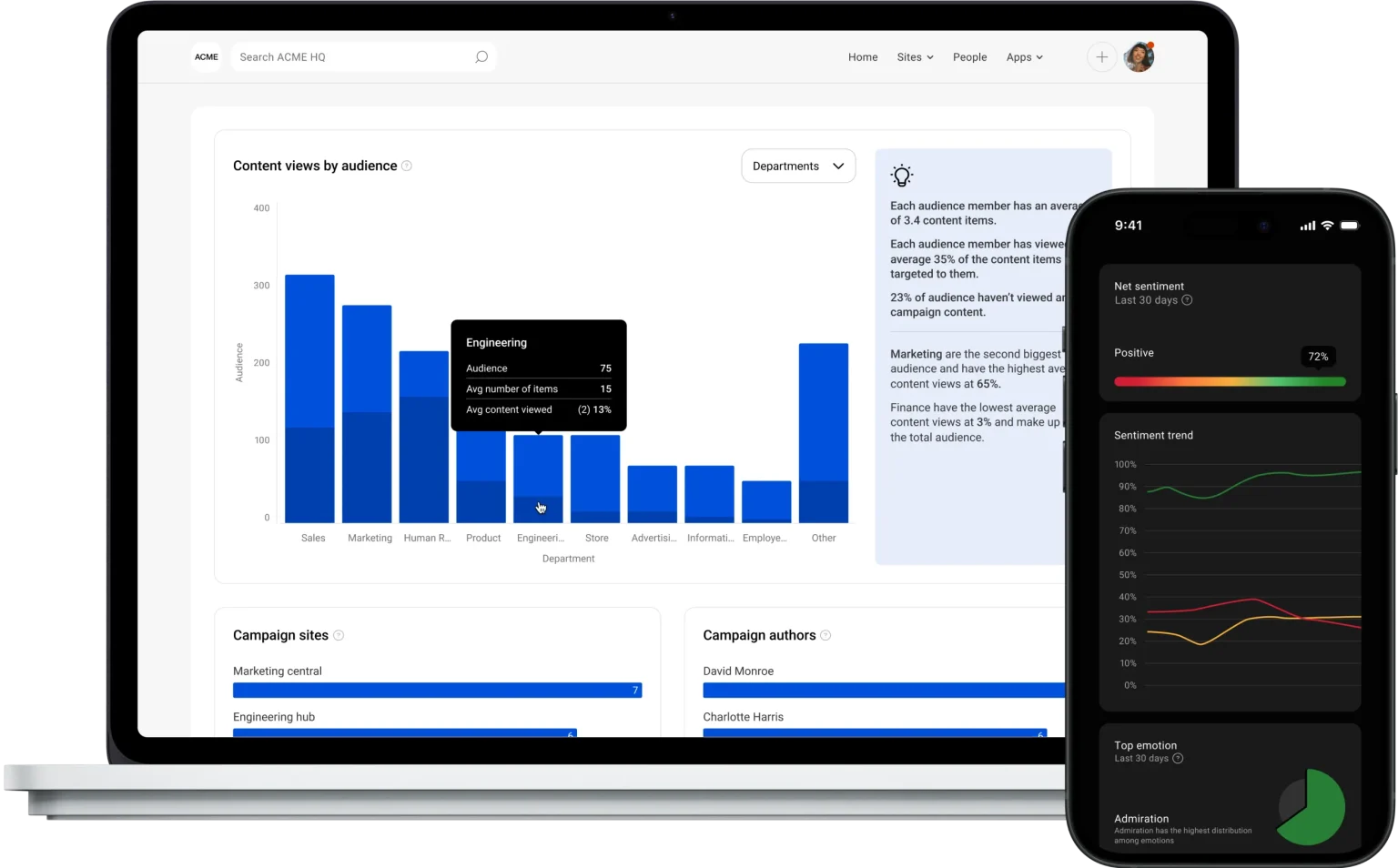Benchmarking defined
Benchmarking is the process of measuring and comparing the performance, efficiency, or quality of a product, service, or process against recognized standards or competitors. Businesses use benchmarks in many different contexts to identify areas for improvement and drive better performance.

Introduction to benchmarking
Benchmarking allows companies to compare various aspects of their business performance to the performance of competitors or industry leaders—or simply to their own past performance. It provides valuable insights into how well a business is doing and identifies areas for improvement.
By analyzing key performance indicators and best practices, benchmarking helps companies set realistic goals, make informed decisions, and stay ahead of the competition. It is a vital tool for businesses that want to enhance their performance and achieve success in a rapidly changing marketplace.
Benchmarking basics
In a nutshell, benchmarking is about using metrics for comparisons. For example, a company might:
- See how their financial reports compare to industry standards
- Test whether a new production system is more efficient than the old one
- Measure and report customer satisfaction scores over time
Benchmarking can be either internal or external.
- Internal benchmarking: testing current performance against past performance within a single company
- External benchmarking: testing a company’s performance against external competitors or external examples of best practices
Purpose of benchmarking
At a high level, the purpose of benchmarking is to measure performance. By comparing key metrics, processes, and practices, benchmarking provides valuable insights into areas of improvement and identifies best practices that can enhance performance.
It also allows companies to identify gaps and set realistic goals for improvement—driving efficiency, productivity, and profitability. Benchmarking helps organizations stay competitive by making sure they are keeping up with industry trends and meeting or exceeding customer expectations.
Overall, benchmarking serves as a vital tool that can help organizations measure their performance accurately and make informed decisions.
The benchmarking process
Benchmarking can relate to almost any business activity, from financial metrics to website performance to employee engagement. No matter what aspect of the business is being evaluated, the essential benchmarking process comes down to setting benchmarks, measuring performance, and evaluating the results.
How does benchmarking work?
By following five basic steps, organizations can effectively benchmark their performance and identify opportunities for improvement. Benchmarking is an ongoing process—updating benchmarks and evaluating performance continuously can help companies stay competitive and drive sustainable growth.
Steps involved in benchmarking
1. Define the objectives and scope
The first step in benchmarking is to define the ultimate objective. Is the company trying to improve operational global efficiency? Raise employee satisfaction in the Chicago office? Lower the cost of attrition for mid-level managers? Successful benchmarking efforts require a clear understanding of the purpose behind each benchmarking initiative.
2. Identify key performance indicators (KPIs)
Next, the business will identify key performance indicators—the metrics that can effectively indicate progress relative to the stated goal. KPIs should be relevant and measurable, providing meaningful insights into the success of the company’s performance objectives.
3. Select benchmarking comparisons
For external benchmarking, the company will identify organizations that it wants to use as targets for comparison. For internal benchmarking, the company will decide on the starting point for the benchmarks to be measured—in many cases, this may involve initial measurements to identify the company’s current performance, giving the company something against which it can measure future performance.
4. Collect data and analyze performance
This is the heart of the benchmarking process. Companies establish current benchmarks—whether internal or external—and begin to measure and track their performance against those benchmarks. During this step, one of the most important keys to success is to ensure that the data being gathered is accurate, reliable, and meaningfully comparable to the chosen KPIs.
5. Develop an action plan for continuous improvement
Based on the performance analysis, companies will identify best practices and develop an action plan. In today’s markets, benchmarking is very rarely a one-time event. Competitive companies use continuous benchmarking to track performance month by month, week by week, or even day by day, depending on the performance being measured.
Key benchmarking best practices
By practicing continuous benchmarking, companies can identify problems in something close to real time and move to address them quickly. A sudden drop in sales, for example, can be investigated within days or even hours to identify the cause and rectify it.
Other key benchmarking best practices include:
- Making sure benchmarking objectives are strongly aligned with organizational goals
- Regularly re-evaluating KPIs to make sure they are still the best performance measures
- Watching the horizon for new technologies, regulations, or other developments that might change industry benchmarks dramatically
- Communicating benchmark results consistently and reliably to ensure that best practices are adopted throughout the organization
How to effectively implement benchmarking
Here are a few tips that can make sure benchmarking implementation is successful:
1. Match KPIs to objectives carefully
If the stated objective is to increase production efficiency, for example, it’s important not just to measure production levels but also other metrics that can indicate the efficiency of that production. This might include output compared to inputs, production per hour, production quality, and so on.
2. Identify how KPIs could affect employee behavior
One danger of benchmarking is that employees tend to focus on the KPIs being measured—and only the KPIs being measured. Measuring the length of customer service calls, for example, will encourage customer service reps to be fast, but not necessarily effective.
3. Assign clear responsibilities
Measuring KPIs is not effective unless the KPI has a clear locus of control. KPIs and objectives should be tied to specific departments, regions, managers, and so on, making sure everyone knows who holds the responsibility for meeting each KPI being measured.
4. Control must accompany responsibility
The team that is responsible for a given KPI must have the ability to control that KPI. While it seems like an obvious principle, this can be more problematic than it sounds. For example, if physical sales are moving to digital sales due to consumer preference, teams responsible for physical retail sales can not control that global trend.
Types of benchmarking
There are many types of benchmarking a company might choose to implement. Here are six of the most common examples:
- Internal benchmarking: comparing and analyzing performance data within an organization. This is useful for identifying areas of improvement and best practices within different departments or branches of the same company.
- Competitive benchmarking: comparing an organization’s performance against its direct competitors. This helps companies identify areas where they can gain a competitive advantage and improve their own performance.
- Functional benchmarking: compares specific functions or processes of an organization with those of other companies, even if they are not direct competitors. This allows organizations to learn from the best practices of other industries.
- Process benchmarking: comparing specific processes within an organization with those of other companies. This aims to identify areas where processes can be streamlined, improved, or optimized.
- Performance benchmarking: compares an organization’s overall performance metrics— such as revenue, profitability, customer satisfaction, and productivity—with those of other companies in the industry to set goals and track progress over time.
- Strategic benchmarking: comparing an organization’s strategies, goals, and processes with those of industry leaders to identify strategic gaps and develop strategies to improve their overall performance.
Exploring different benchmarking types
From tracking internal processes to global benchmarking studies, different types of benchmarking can have very different purposes.
A single production facility might use benchmarking to track down performance gaps. Business leaders might practice benchmarking within a single business unit to discover why that unit is experiencing superior performance. An enterprise-level company that wants to move into new global markets might practice competitive benchmarking to make sure the new venture can compete, or it might practice internal performance benchmarking to make sure the new venture is acceptably profitable compared to its collection of markets and business lines as a whole.
The best type of benchmarking to use depends entirely on the business operations being studied.
Understanding the various approaches to benchmarking
There are various approaches to benchmarking, each with its own advantages and disadvantages. The simple way to understand these approaches is to categorize them into three main types:
- Internal benchmarking
- Competitive benchmarking
- Functional benchmarking
Internal benchmarking involves comparing performance within the organization, while competitive benchmarking looks at how the organization measures up against its competitors.
Functional benchmarking, on the other hand, focuses on specific processes or functions within the organization and compares them to similar processes in other industries.
By understanding these different approaches, organizations can choose the most appropriate one for their needs and gain valuable insights to drive improvement.
Benchmarking benefits and challenges
In general, benchmarking presents both benefits and challenges. The key is to define benchmarking methods well—to capture their advantages while minimizing the potential drawbacks.
Advantages of benchmarking
The advantages of benchmarking include:
- Helping businesses to identify strengths as well as gaps in performance
- Providing insights and knowledge about innovative strategies and processes
- Setting realistic goals and targets for performance improvement
- Promoting continuous improvement and learning within the organization
Potential challenges with benchmarking
The potential challenges of benchmarking include:
- Gathering accurate and relevant data, especially in external benchmarking, which requires comparing performance and practices with other entities
- Ensuring the comparability of data across different organizations, industries, and reporting methods
- Identifying suitable benchmarking partners—comparable entities that are similar in terms of size, industry, or operations
- Overcoming resistance to change, including reluctance from employees or management to adopt new practices or strategies
Common issues with implementing benchmarking
In fact, one of the greatest challenges in implementing benchmarking is not the process of benchmarking, per se, but rather communicating and implementing what is learned throughout the organization.
For a global enterprise organization that is constantly measuring KPIs across all of its various regions, departments, brands, markets, and channels—and across every aspect of its business, from finance to human resources—the problem expands dramatically.
How Simpplr can help
Simpplr’s modern, AI-powered intranet platform simplifies and accelerates company learning, making KPIs and other data easily accessible across a workforce of any size. In fact, Simpplr includes its own benchmarking tools built right in.
Simpplr helps organizations take control of their intranet by:
- Tracking employee usage and engagement
- Surfacing relevant data to reflect personalized needs
- Integrating with external analytics platforms
- Setting goals and expectations with integrated benchmarks
- And much, much more
Prescriptive analytics can improve intranet adoption, usage, engagement, and governance based on peer benchmarks and industry best practices. Simpplr also leverages AI for passive listening at scale, collecting millions of data points across the platform to detect emotions, sentiments, and language patterns.
Track usage over time to measure the success of your intranet. Compare survey results and analyze engagement data to foster continuous improvement. Leverage benchmarking solutions such as Simpplr’s Perception Dashboard to get an understanding of user sentiment and trends across communities.
Start here to explore what an AI-powered intranet solution could do for your company.

Watch a 5-minute demo
See how the Simpplr employee experience platform connects, engages and empowers your workforce.
- #1 Leader in the Gartner Magic Quadrant™
- 90%+ Employee adoption rate







